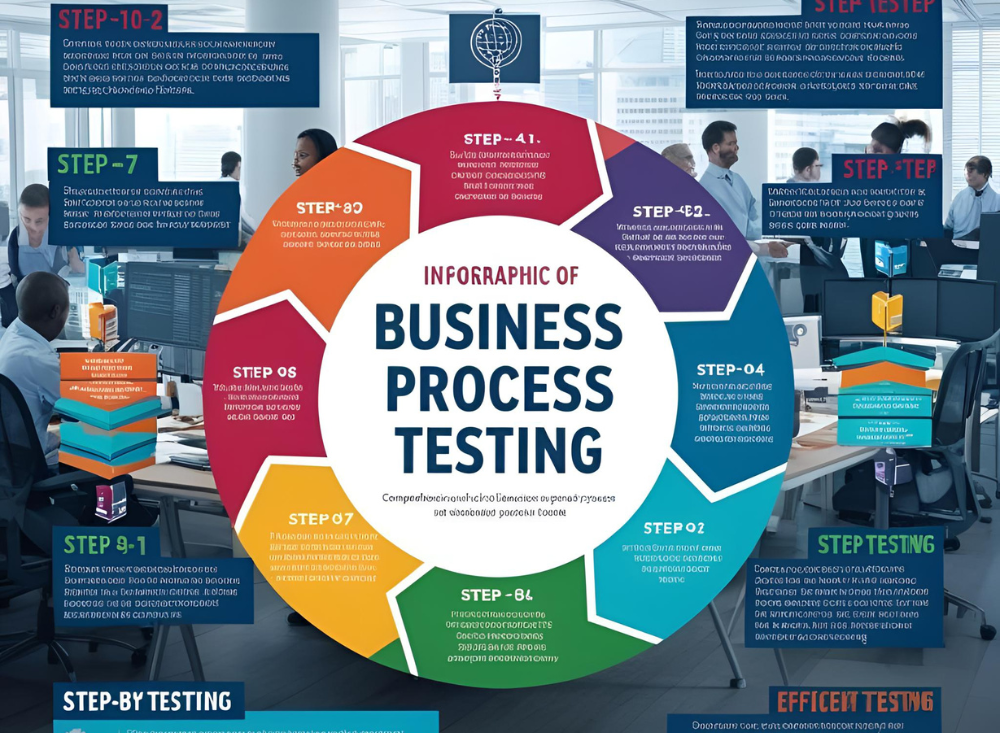
In today’s fast-paced digital landscape, ensuring the efficiency and reliability of business processes is critical for organizational success. Business Process Testing (BPT) plays a vital role in validating these processes, ensuring they align with business goals, and delivering a seamless user experience. This comprehensive guide explores the definition, importance, challenges, strategies, and best practices for business process testing, helping you optimize your testing efforts and achieve operational excellence.
What is Business Process Testing?
Business Process Testing (BPT) is a specialized approach to software testing that focuses on validating end-to-end business processes rather than individual components or functionalities. It ensures that all interconnected systems, workflows, and user interactions function as intended, delivering the desired business outcomes.
What is a Business Process in Software Testing?
A business process in software testing refers to a sequence of activities or workflows designed to achieve a specific business goal. These processes often span multiple systems, applications, and user roles, making them complex and interdependent. Examples include order-to-cash processes, customer onboarding workflows, and inventory management systems.
Steps for Conducting Automated Business Process Testing
Automating business process testing can significantly improve efficiency and accuracy. Here’s a step-by-step approach to conducting automated BPT:
- Identify Key Business Processes:
- Determine the critical processes that impact business outcomes.
- Prioritize processes based on their complexity, frequency, and importance.
2. Define Test Scenarios:
- Create detailed test scenarios that cover all possible workflows and user interactions.
- Include positive, negative, and edge cases to ensure comprehensive coverage.
3. Develop Test Scripts:
- Write automated test scripts that simulate real-world user actions.
- Ensure scripts are modular, reusable, and easy to maintain.
4. Execute Tests:
- Run automated tests in a controlled environment to validate the business processes.
- Monitor test execution and log results for analysis.
5. Analyze Results:
- Review test results to identify defects, bottlenecks, and areas for improvement.
- Collaborate with stakeholders to address issues and optimize processes.
6. Maintain and Update Tests:
- Regularly update test scripts to reflect changes in business processes or systems.
- Continuously improve test coverage and accuracy.
Why is Business Process Testing Needed?
Business Process Testing is essential for several reasons:
- Ensures Process Accuracy: Validates that business processes function as intended, minimizing errors and inefficiencies.
- Improves User Experience: Ensures seamless workflows and interactions for end-users.
- Supports Compliance: Helps organizations meet regulatory and industry standards.
- Reduces Costs: Identifies and resolves issues early, reducing the cost of fixing defects post-deployment.
- Enhances Agility: Enables organizations to adapt quickly to changing business needs.
Challenges with Business Process Testing
While BPT offers significant benefits, it also comes with challenges:
- Complexity: Business processes often involve multiple systems, making testing complex and time-consuming.
- Data Dependency: Testing requires realistic and diverse data, which can be difficult to obtain and manage.
- Integration Issues: Ensuring seamless integration between interconnected systems is challenging.
- Resource Constraints: BPT requires skilled testers, time, and resources.
- Maintenance: Keeping test scripts up-to-date with evolving business processes can be demanding.
Common Business Process Testing Strategies
To overcome these challenges, organizations can adopt the following strategies:
1.Automation
- Automate repetitive and complex test scenarios to improve efficiency and accuracy.
- Use automation to simulate real-world user interactions and workflows.
2.End-to-End Testing
- Validate the entire business process from start to finish, including all integrated systems and user roles.
- Ensure consistency and reliability across workflows.
3.Regression Testing
- Test existing functionalities after changes or updates to ensure no disruptions in business processes.
- Automate regression tests to save time and resources.
4.Performance Testing
- Evaluate the performance of business processes under various conditions, such as high user loads or data volumes.
- Identify and resolve bottlenecks to ensure optimal performance.
5.Comprehensive Test Coverage
- Ensure all possible workflows, user interactions, and edge cases are covered.
- Use data-driven testing to validate processes with diverse datasets.
Identifying a Robust Business Process Testing Approach
To implement an effective BPT strategy, consider the following features:
1.No-Code Test Automation
- Enable non-technical users to create and execute test scripts without coding expertise.
- Simplify test creation and maintenance.
2.AI-Driven Testing
- Leverage AI to identify patterns, predict defects, and optimize test coverage.
- Use AI for self-healing scripts and dynamic test adjustments.
3.End-to-End Testing
- Support testing across multiple systems, applications, and user roles.
- Ensure seamless integration and consistency.
4.Cross-Platform Compatibility
- Validate business processes across different platforms, devices, and browsers.
- Ensure a consistent user experience.
5.Parallel and Distributed Testing
- Execute multiple tests simultaneously to reduce execution time.
- Distribute tests across environments for scalability.
Conclusion
Business Process Testing is a critical component of ensuring operational efficiency, user satisfaction, and business success. By validating end-to-end workflows, organizations can identify and resolve issues early, reduce costs, and enhance agility. While challenges like complexity and resource constraints exist, adopting strategies such as automation, end-to-end testing, and AI-driven testing can help overcome these hurdles.
To achieve success in business process testing, focus on comprehensive test coverage, collaboration between teams, and continuous improvement. By implementing a robust BPT strategy, you can optimize your business processes, deliver exceptional user experiences, and stay ahead in the competitive digital landscape. Start your business process testing journey today and unlock the full potential of your organization!